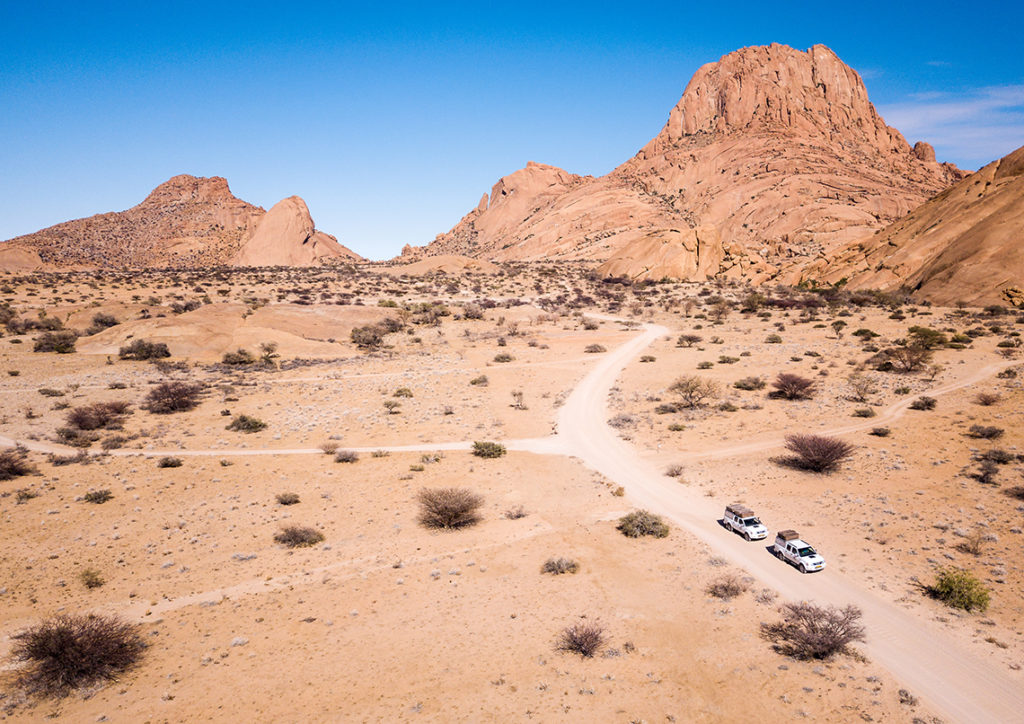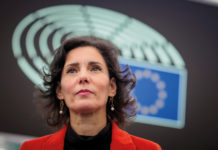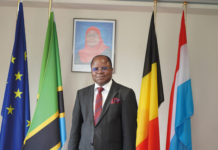Land of sheer untamable vastness with almost supernatural beauty, Botswana hosts a very exclusive safari tourism, highly popular among celebrities. UNESCO-stamped reserves are home to the largest wild elephant populations in the world. Tourism has grown tremendously, bringing in tens of thousands of jobs. Today, Botswana aims to expand its offer to cultural and sports tourism, and to open new areas to a less fortunate clientele.

 This beautiful country is one of the last remaining great refuges for wild life and natural wonders. With a territory three times greater than that of Senegal, 38% of which is dedicated to wildlife (national parks, reserves, estates) and only 2.3 million inhabitants, Botswana remains the dream destination of those who sometimes want to escape from a noisy and overpopulated world. Between endless deserts and savannas as far as the eye can see, the feeling of being alone in the world takes on its full meaning.
This beautiful country is one of the last remaining great refuges for wild life and natural wonders. With a territory three times greater than that of Senegal, 38% of which is dedicated to wildlife (national parks, reserves, estates) and only 2.3 million inhabitants, Botswana remains the dream destination of those who sometimes want to escape from a noisy and overpopulated world. Between endless deserts and savannas as far as the eye can see, the feeling of being alone in the world takes on its full meaning.
Increasingly rare among safari destinations, most Botswana parks, reserves, and estates are not fenced, allowing animals to roam the territory in complete freedom. An invaluable privilege of the exceptional richness of the local fauna: it is highly likely to sight the famous «Big Five» – elephants, lions, leopards, buffaloes and rhinoceros – but also more than 118 other species of mammals, 444 species of birds and 64 species of reptiles, identified in the sole Moremi reserve. Some endangered species that can no longer be found elsewhere are still finding refuge there: the African wild dog, the cheetah, the brown hyena, the vulture or Pel’s fishing owl, to name a few.
Along the Okavango Delta
A pure UNESCO World Heritage wonder, the Okavango Delta is the second largest inland delta in the world (18,000 km2) after the Niger Delta in Mali. It reveals its true magical nature with the lagoons, islets, forests and savannahs perfectly intact, discovered while gliding on its peaceful waters in a “mokoro” canoe.
On its banks lies the Moremi Game Reserve, abundant with elephants, giraffes, impalas, cheetahs, lions, crocodiles and warthogs, as well as countless species of birds found between the reeds and papyrus. The Okavango has the particularity of never reaching the ocean: the river, originating in Angola, runs aground after 1,500 km in a vast delta that evaporates in the Kalahari Desert.
Safari in Chobe National Park
In the north-east of the country, Chobe is the safari destination par excellence. People come from all over the world to admire the most important gatherings of elephants and predators from all over Africa: it is home to around 50,000 «Kalahari elephants», the largest ever recorded. It is possible to explore the park in 4×4 or quad, or to fly over by helicopter to spot lions and cheetahs attracted by the migration of zebras between the banks of the Savuti and Chobe rivers. Also full of life, these waters are populated by herds of hippos and crocodiles.
Make an exception for the Kalahari Desert, which reveals its splendor during the rainy season (local summer, from November to March) with the arrival of flamingos and the migrations of zebra and wildebeest, mingling with the return of a soft vegetation.
A very high-end growth
Protected and with regulated access, parks and reserves are dotted with just a few isolated lodges, proof of a discreet and an exclusive tourism. The roads are of good quality but rare too, and the few luxury lodges cannot accommodate more than a dozen travelers each. Only an elite can tread these lands: in the Okavango Delta, one night during the high season (July-September) is around US $1,000.
In a niche market comparable to that of the Seychelles, very high-end tourism has continued to grow in Botswana. Tourism revenues increased from US $561 million in 2005 to US $1.1 billion in 2016, according to World Tourism Organization figures. Resilient to crises, the tourism sector is a major job creator: today it provides a livelihood for nearly 250,000 Botswanans.
This remarkable expansion has naturally been achieved with the support of the Botswana government, in collaboration with the major luxury safari tour operators such as Ker & Downeyn, And Beyond or Tourvest, almost all owned by Americans, Botswanans or white South Africans who pioneered the sector over twenty years ago. The current Minister of Tourism and Environment, Tshekedi Khama II, has promoted the development as well as the concentration of this handful of large groups. They were few in number and easier to control from an environmental and societal point of view.
Conquering a new tourism
If the tourism sector wants to experience the same growth in the future, it can no longer rely exclusively on the Okavango Delta and the Chobe Park, where accommodation possibilities are already reaching saturation point during the high season. Aware of these new challenges, the Botswanan authorities are considering opening up new regions of the country to a broader, less high-end tourism, but without making it a mass destination incompatible with environmental requirements and wildlife conservation.
Among the new regions opened up to tourism is the Kalahari Desert, with an offer more focused on adventure and sport, but also culture. Indeed, Botswana is rich in artistic traditions and welcoming villages to visit. The racial harmony and benevolence of the Tswana towards foreigners reign everywhere, guaranteeing a peaceful stay. The idea is to increase the sector’s income by extending the stay of tourists with projects such as the Toyota Desert Race, the Khawa Dune Challenge and Cultural Festival or the Makgadikgadi dance festival. An opening leading to job creation and better distribution of profits.

![[:en]TOURISM[:]](https://perspectives-cblacp.eu/wp-content/uploads/2019/03/TOURISM-696x464.jpg)


